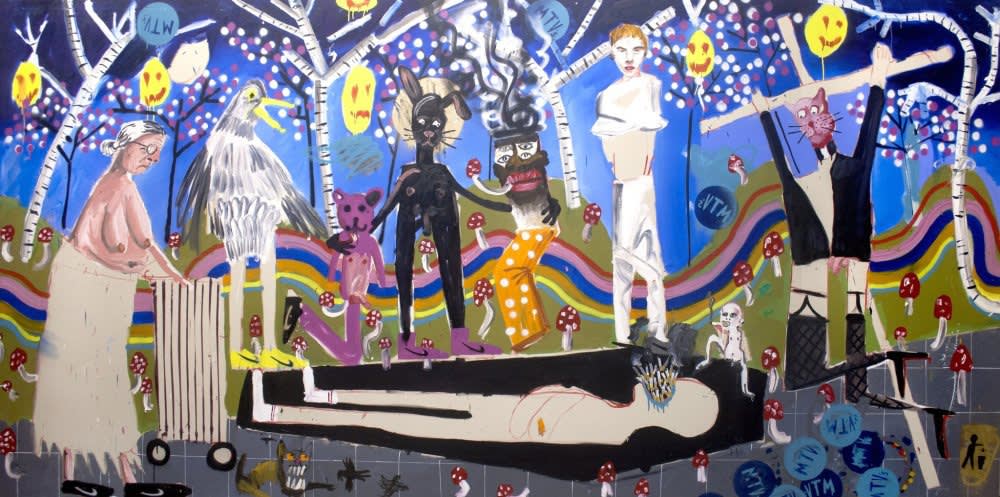26 June 2016 Dale Lewis worked at Science Ltd producing pieces designed by Damien Hirst, and then as assistant to fantastical hyperrealist painter Raqib Shaw. An urban visionary, he makes use of both experiences to create some of the most original, raw, engaging compositions by an emerging painter that I have seen for years.

Dale Lewis, Acid Man's Funeral, 2015, oil, acrylic and spray paint on canvas, 200 x 400 cm.
One of three Jerwood Fellows in the third edition of a programme of mentoring and bursaries for young artists, he is the star of this year’s show.
Typical of his carnivalesque tableaux are “Acid man’s funeral”, with a black rabbit in pink Nike trainers and a cat-vicar among the drugged-out mourners; “Sunday Roast”, where the feast is an orgy; and “Champagne”, a parody of Ascot revellers. Human-animal hybrids and versions of the human form stretched out like nonchalant punk Giacomettis play out dramas tinged with violence — eating and being eaten, rituals of sexual attraction and social performance — against gritty cityscapes enlivened with rainbows, lanterns, mushrooms, psychedelic hues.
The effect is one of tense delirium, abundant in comic detail but underpinned by a classical sense of composition: hallucinatory yet convincing stories of the young, multicultural, gender- ambivalent, debauched and a class-divided society.
The other two artists here are a decade younger, less fully formed, but show promise, ambition and individuality. Manipulating motifs both banal and grandly art historical — from popcorn to Fragonard — Archie Franks demonstrates a rococo sensibility and feel for fat, rich, sensuous paint in dreamy, disquieting, finely tuned compositions.
Francesca Blomfield has a more conceptual approach: visual patterns, rhythms, colour systems determine cooler, chalky paintings, whose abstracted subjects include limousine interiors, tagliatelle and human hair. Energetic and celebratory, dialogues about form, colour, and uses of narrative and sources ripple across these walls.

